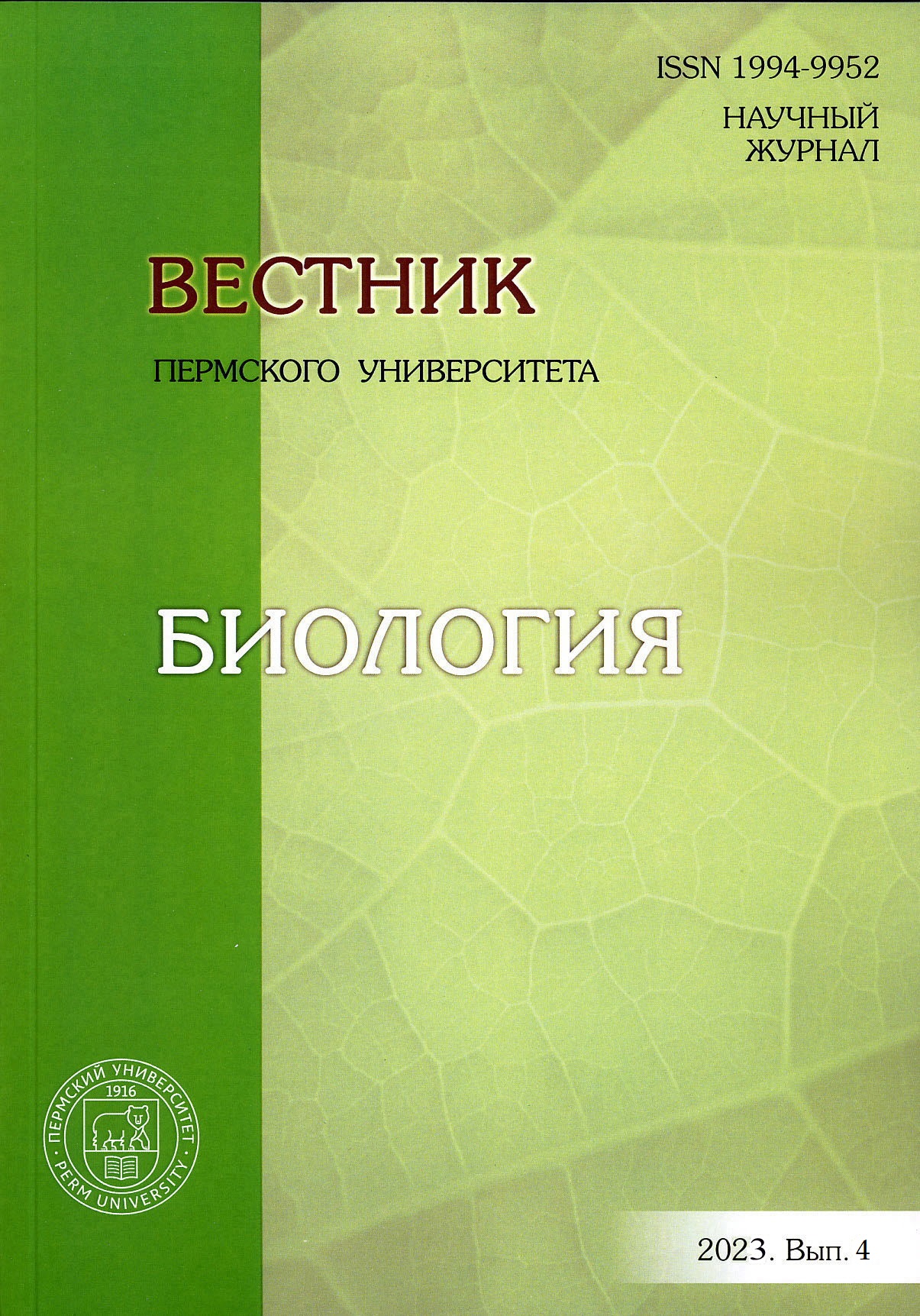Enhancing the biodegradation of ibuprofen through factor analysis and kinetic modeling
Main Article Content
Abstract
Article Details
References
Сергиенко В.И., Бондарева И.Б. Математическая статистика в клинических исследованиях. М: ГЭОТАР МЕДИЦИНА, 2000. 256 с.
Anteneh Y.S., Franco C.M.M. Whole cell actinobacteria as biocatalysts // Frontiers in Microbiology. 2019. Vol. 10. P. 77. DOI: 10.3389/fmicb.2019.00077.
Catalogue of Strains of Regional Specialized Collection of Alkanotrophic Microorganisms. URL: http://www.iegmcol.ru/strains/index.html. (Дата обращения: 01.11.2023).
Chopra S., Kumar D. Ibuprofen as an emerging organic contaminant in environment, distribution and re-mediation // Heliyon. 2020. Vol. 6, № 6. P. e04087. DOI: 10.1016/j.heliyon.2020.e04087.
Girardot F. et al. Bacterial diversity on an abandoned, industrial wasteland contaminated by polychlorin-ated biphenyls, dioxins, furans and trace metals // Science of the Total Environment. 2020. Vol. 748. P. 141242. DOI: 10.1016/j.scitotenv.2020.141242.
Ivshina I.B., Kuyukina M.S., Krivoruchko A.V. Hydrocarbon-oxidizing bacteria and their potential in eco-biotechnology and bioremediation // Microbial Resources. From Functional Existence in Nature to Applications / ed. I.B. Kurtböke. Academic Press, 2017. Р. 121–148. DOI: 10.1016/B978-0-12-804765-1.00006-0
Ivshina I.B. et al. Drotaverine hydrochloride degradation using cyst-like dormant cells of Rhodococcus ruber // Current Microbiology. 2015. Vol. 70, № 3. P. 307–314. DOI:10.1007/s00284-014-0718-1.
Ivshina I.B. et al. Features of diclofenac biodegradation by Rhodococcus ruber IEGM 346 // Scientific Reports. 2019. Vol. 9. P. 9159. DOI: 10.1038/s41598-019-45732-9.
Ivshina I.B. et al. Response of Rhodococcus cerastii IEGM 1278 to toxic effect of ibuprofen // PLoS ONE. 2021. Vol. 16, № 11. P. e0260032. DOI: 10.1371/journal.pone.0260032.
Karpenko Yu.N. et al. Chromatographic determination of drotaverine hydrochloride and kinetic model-ing of the process of its biodestruction in a R. rhodochrous culture liquid // Journal of Analytical Chemistry. 2014. Vol. 69, № 7. P. 681–685. DOI: 10.1134/S1061934814070077.
Khrenkov A.N. et al. Chromatographic analysis of acetylsalicylic acid in Rhodococcus cultural fluids // Moscow University Chemistry Bulletin. 2020. Vol. 61, № 5. P. 309–314. DOI: 10.3103/S0027131420050053
Patel M. et al. Pharmaceuticals of emerging concern in aquatic systems: Chemistry, occurrence, effects, and removal methods // Chemical Reviews. 2019. Vol. 119, № 6. P. 3510–3673. DOI: 10.1021/acs.chemrev.8b00299.
Plotnikov A.N. et al. Determination of codeine phosphate in the culture fluid of Rhodococcus by high-performance liquid chromatography // Moscow University Chemistry Bulletin. 2017. Vol. 72, № 6. P.328–332. DOI: 10.3103/S0027131418010054.
Sánchez-Aceves L. et al. Long-term exposure to environmentally relevant concentrations of ibuprofen and aluminum alters oxidative stress status on Danio rerio // Comparative Biochemistry and Physiology Part C Toxicology & Pharmacology. 2021. Vol. 248. P. 109071. DOI: 10.1016/j.cbpc.2021.109071.
Vikhareva E.V. et al. Chromatographic determination of ibuprofen in Rhodococcus culture media and kinetic modeling of its biodegradation process // Journal of Analytical Chemistry. 2023. Vol. 78, № 2. P. 241–246. DOI: 10.1134/S1061934823010136.




